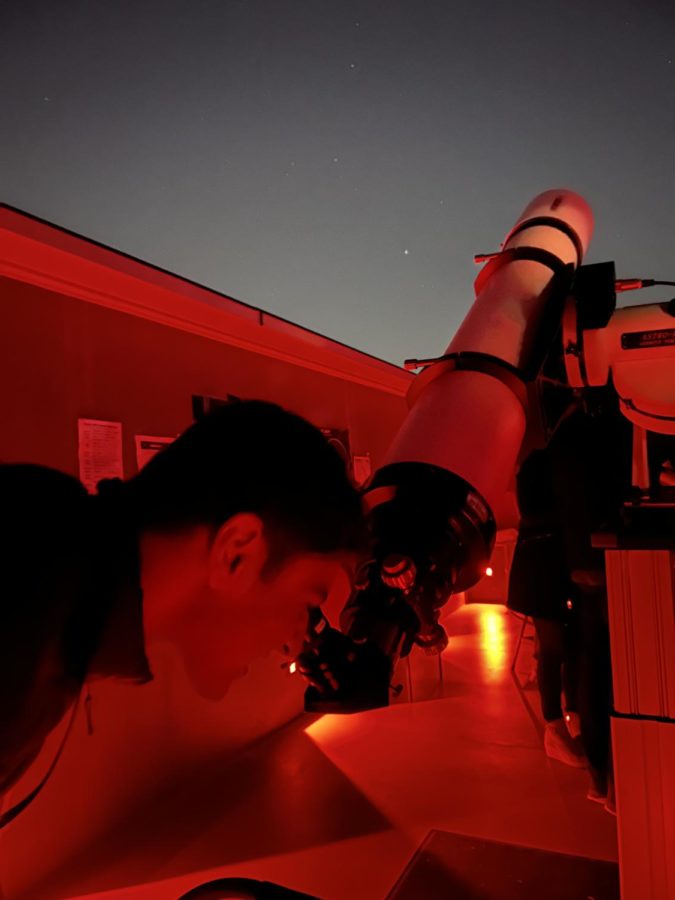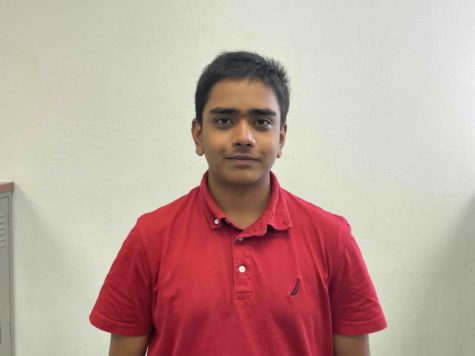Young astronomers explore void of space
Senior Aaditya Khurana looks through a telescope at Great Falls Park on Oct. 21 to spot celestial appearances. Used with permission of Aaditya Khurana.
December 11, 2022
Occupations in physics and astronomy are projected to grow 8% in the next nine years, faster than any other occupational field, according to the Bureau of Labor Statistics (BLS). Space exploration occupations are in demand to ensure that humans have a place to reside once Earth becomes inhospitable. Consequently, students learn and share knowledge about space with the goal of pursuing careers in this area.
Amid college applications and school work, senior Aiden Levy pursues his career goal of becoming an aerospace engineer. Levy has always dreamt of becoming an engineer with some relation to space.
He has not only taken numerous STEM-related classes throughout high school, but has also joined extracurriculars such as robotics and the Technology Student Association to test and improve his abilities.
Furthermore, Levy got a step ahead in his career through opportunities including the MIT Beaver Works Summer Academy, Virginia Space Coast Scholars Program and Virginia Aerospace Science and Technology Scholars Program.
“I’ve been fortunate to have many opportunities available to me that I chose to pursue,” said Levy.
He regularly chats with mentors at local NASA centers about the roles they have in generating a successful launch, and he sees it as something that he himself will pursue in the long term.
“Recently, I’ve been working with a small team on building single-stage high power rockets, so we can earn our Junior Level 1 High Power Rocketry Certifications sometime soon,” Levy said.
There are many opportunities available in the school regarding STEM careers, but many outside of school as well for those passionate to go beyond.
“Even though I know that I will probably not be affected by the current space explorations, I am happy for future generations that will get to experience the fascinating universe beyond the boundaries of our Earth’s ozone layer,” junior Gautam Tewari said.
In Astronomy Club, the focus is the origins and status of celestial objects more than the mathematical and competitive aspect of astronomy since mathematics with celestial objects is too complex for high school astronomy.
On Oct. 21, there was an observatory meeting at Great Falls Park through the Astronomy Club. At the observatory meeting, the club members tried to spot the Pleiades meteor shower and other celestial objects. The Pleiades is one of the brightest celestial occurrences that appears from October to April, but is brightest in the month of November.
Additionally, the astronomy club is planning events in light of upcoming astronomical occurrences. The Artemis launch, initiated by NASA, is an upcoming uncrewed rocket launch that will collect data by going to the moon and back. Information entailing details and the purpose of the mission will be covered at the Astronomy Club watch party.
“As for the Artemis launch this coming November, we will be having a watch party in Astronomy Club on the day of the launch,” Senior Aaditya Khurana said.
The watch party was initially planned for an earlier date in October, but due to fuel leaks in the rocket, the launch and watch party were postponed to Nov. 14. Having already been postponed thrice, it is likely that the launch gets postponed again due to technical difficulties. At the meeting, a live feed of the rocket launch from the NASA YouTube channel will be projected.



